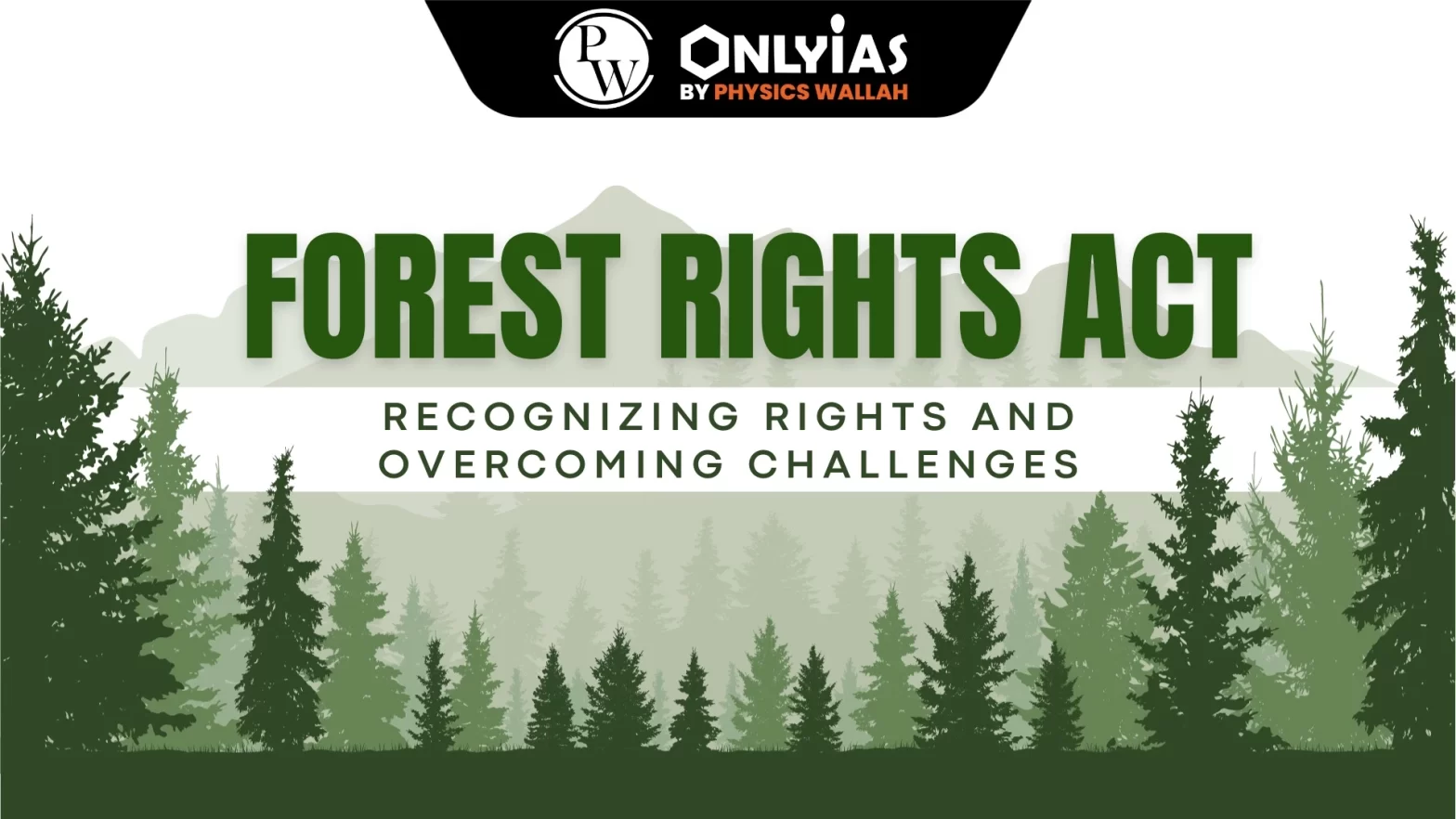

Context: This article is based on an Editorial “ An uphill struggle to grow the Forest Rights Act ” which was published in the Hindu. This article expresses concerns over the implementation of the Scheduled Tribes and Other Traditional Forest Dwellers (Recognition of Forest Rights) Act that was enacted even 17 years earlier.
Impact of Colonisation: It resulted in a massive disruption of their traditional rights.
Impact of hurry Assimilation of Princely States and Zamindari Estates: The forest areas were declared state property and hence legitimate residents and cultivators became ‘encroachers’.
Impact of the Wildlife (Protection) Act 1972 and the Forest (Conservation) Act 1980 (FCA) : Lakhs of communities were forcibly resettled without considering the views or consent of local communities and they were not adequately compensated for the impact on their livelihoods.
Political leaders, bureaucrats, environmentalists, and all stakeholders need to appreciate the spirit and the intent of the Forest Rights Act. There is also a need for comprehensive recognition and awareness of both individual and community forest rights by all and its proper implementation .
Effective implementation of the Forest Rights Act requires a collective understanding and commitment from all stakeholders to recognize and uphold both individual and community forest rights, fostering a more inclusive and sustainable approach to forest governance in India.
Consider the following statements:
1. The definition of “Critical Wildlife Habitat” is incorporated in the Forest Rights Act, 2006.
2. For the first time in India, Baigas have been given Habitat Rights.
3. Union Ministry of Environment, Forest and Climate Change officially decides and declares Habitat Rights for Primitive and Vulnerable Tribal Groups in any part of India.
Which of the statements given above is/are correct?
(c) 3 only (d) 1, 2 and 3
| Mains Question: The Forest Rights Act (FRA) of 2006 was a historic legislation that sought to correct colonial injustices and democratize forest governance in India. Critically analyze the issues plaguing its implementation over the past 15 years. (15 marks, 250 words) |
|---|